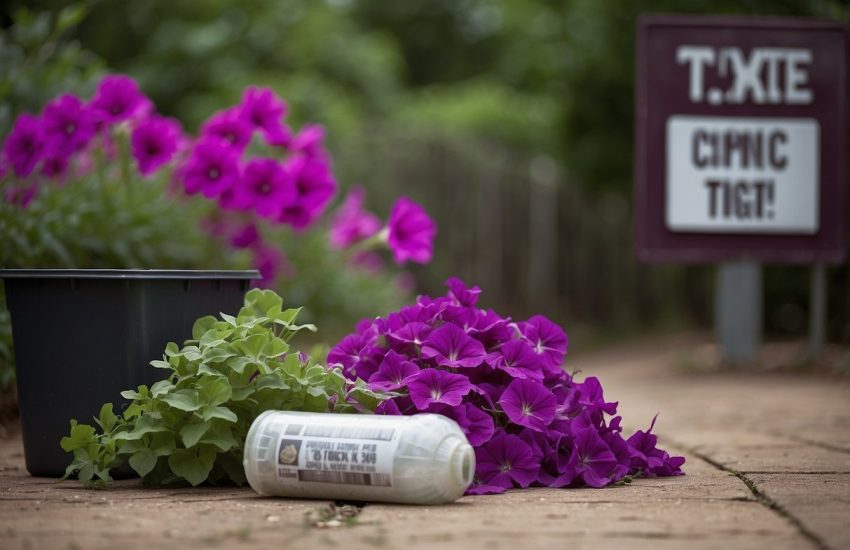Coreopsis: A Guide to Growing and Caring for the Golden Tickseed
Coreopsis is a genus of flowering plants that belongs to the Asteraceae family. These plants are commonly known as tickseed and are native to North America. Coreopsis plants come in a variety of colors, including yellow, pink, red, and white. They are also available in different sizes, from small annuals to tall perennials.
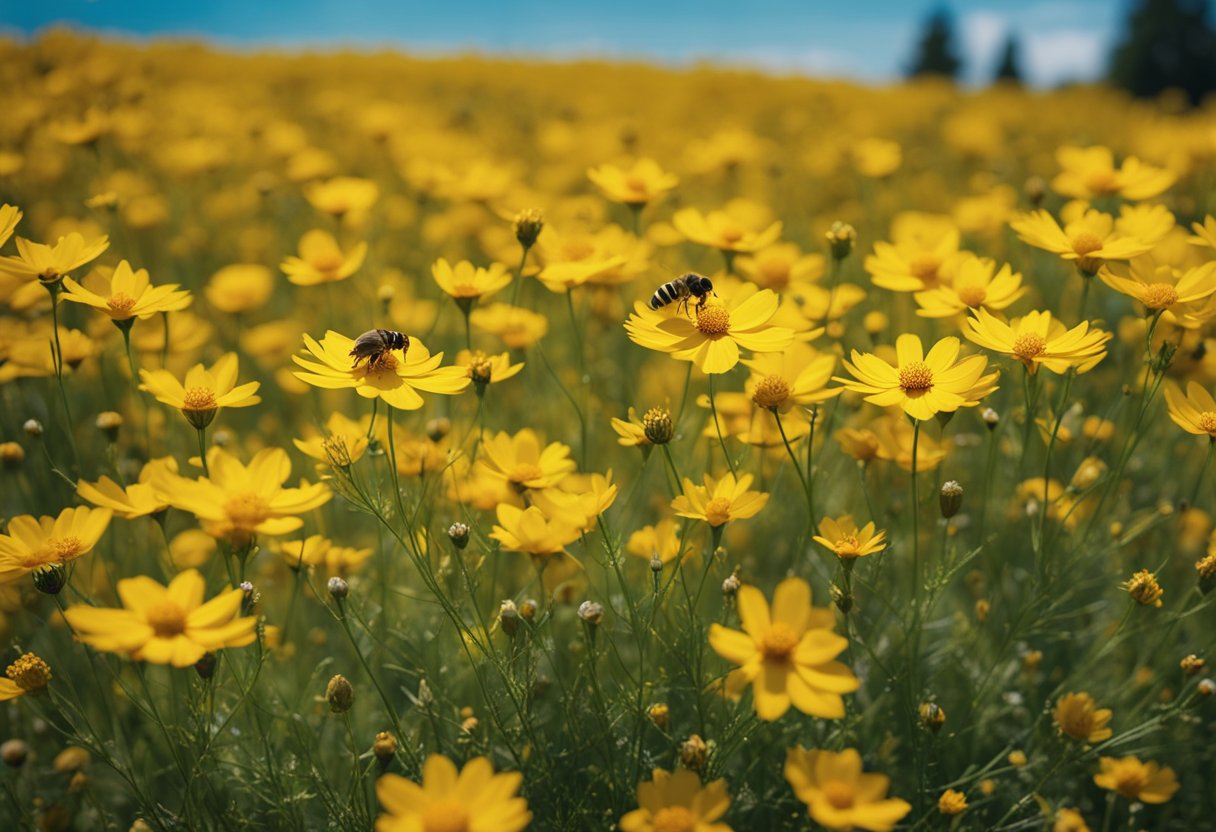
Perennial coreopsis is a popular plant for gardeners due to its long blooming period and low maintenance. These plants are drought-tolerant and can thrive in a variety of soil types. Annual coreopsis, on the other hand, is a great choice for gardeners looking for a pop of color in their garden beds. These plants are easy to grow from seed and can reseed themselves, making them a great option for naturalizing areas.
Coreopsis is a North American native plant and can be found growing in the wild in many areas. These plants are often used in prairie and meadow plantings, as well as in pollinator gardens. With their bright colors and long blooming period, coreopsis is a great addition to any garden.
Botanical Profile
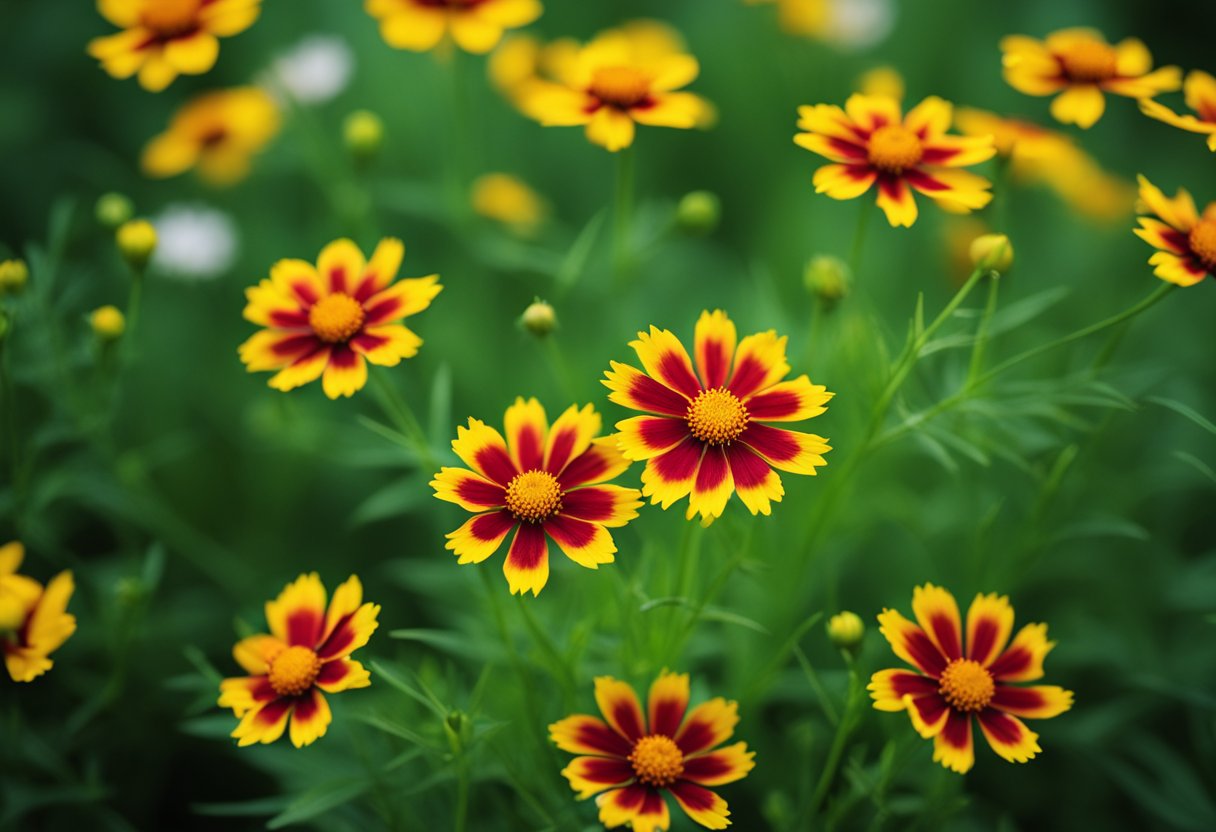
Genus and Species
Coreopsis is a genus of flowering plants in the family Asteraceae. The botanical name for coreopsis is Coreopsis spp. The genus includes both annual and perennial species, with a wide range of flower colors and shapes. The most common species of coreopsis are Coreopsis verticillata and Coreopsis rosea.
Common Names
Coreopsis is commonly known as tickseed or calliopsis. The name tickseed comes from the small, black seeds that resemble ticks. The name calliopsis comes from the Greek words “kallos” meaning beauty and “opsis” meaning sight, referring to the beauty of the flowers.
Coreopsis is a popular garden plant due to its long blooming period and low maintenance requirements. The plant is native to North and South America and is widely distributed in the United States.
Coreopsis plants typically have yellow, pink, or red flowers with a yellow center. The leaves are usually green and lance-shaped, with a slightly fuzzy texture. The plant grows to a height of 1-2 feet and spreads 1-2 feet wide.
Overall, coreopsis is a beautiful and easy-to-grow plant that adds color and beauty to any garden.
Cultivation
Planting Guidelines
Coreopsis is a hardy plant that is easy to grow and care for. The best time to plant coreopsis is in the spring after all risk of frost has passed. The plant has a moderate growth rate and is available in an array of colors and patterns. It is highly adaptable and can be used in nearly all garden settings.
When planting coreopsis, it is important to ensure that the soil is well-drained and fertile. The plant prefers full sun but can also tolerate light shade. It is important to water the seeds until germination, which usually occurs within 21 days. Mist the seeds for moisture and sow them in succession to allow for an abundance of growing coreopsis.
Soil Requirements
Coreopsis grows best in fertile soil that is well-drained. The soil should be rich in organic matter and have a pH level between 5.5 and 7.5. If the soil is too acidic, add lime to raise the pH level. If the soil is too alkaline, add sulfur to lower the pH level.
Light and Temperature
Coreopsis prefers full sun but can also tolerate light shade. The plant can grow in USDA zones 2 through 8, dying back after frost and returning in the spring. In the coldest zones, add a few inches of mulch to protect its underground roots.
The plant can tolerate a wide range of temperatures, but it prefers warm temperatures between 60 and 85 degrees Fahrenheit. It is important to protect the plant from extreme heat and cold, as this can damage the plant.
Watering and Fertilization
Coreopsis requires regular watering, especially during dry periods. Water the plant deeply once a week, rather than shallowly every day. This will encourage the roots to grow deeper and make the plant more drought-tolerant.
Fertilize the plant once a month with a balanced fertilizer to encourage healthy growth and flowering. Avoid over-fertilizing the plant, as this can cause it to produce too much foliage and fewer flowers.
Overall, coreopsis is a low-maintenance plant that is easy to grow and care for. By following these planting guidelines, soil requirements, light and temperature recommendations, and watering and fertilization tips, you can enjoy beautiful and vibrant coreopsis flowers in your garden.
Varieties and Cultivars
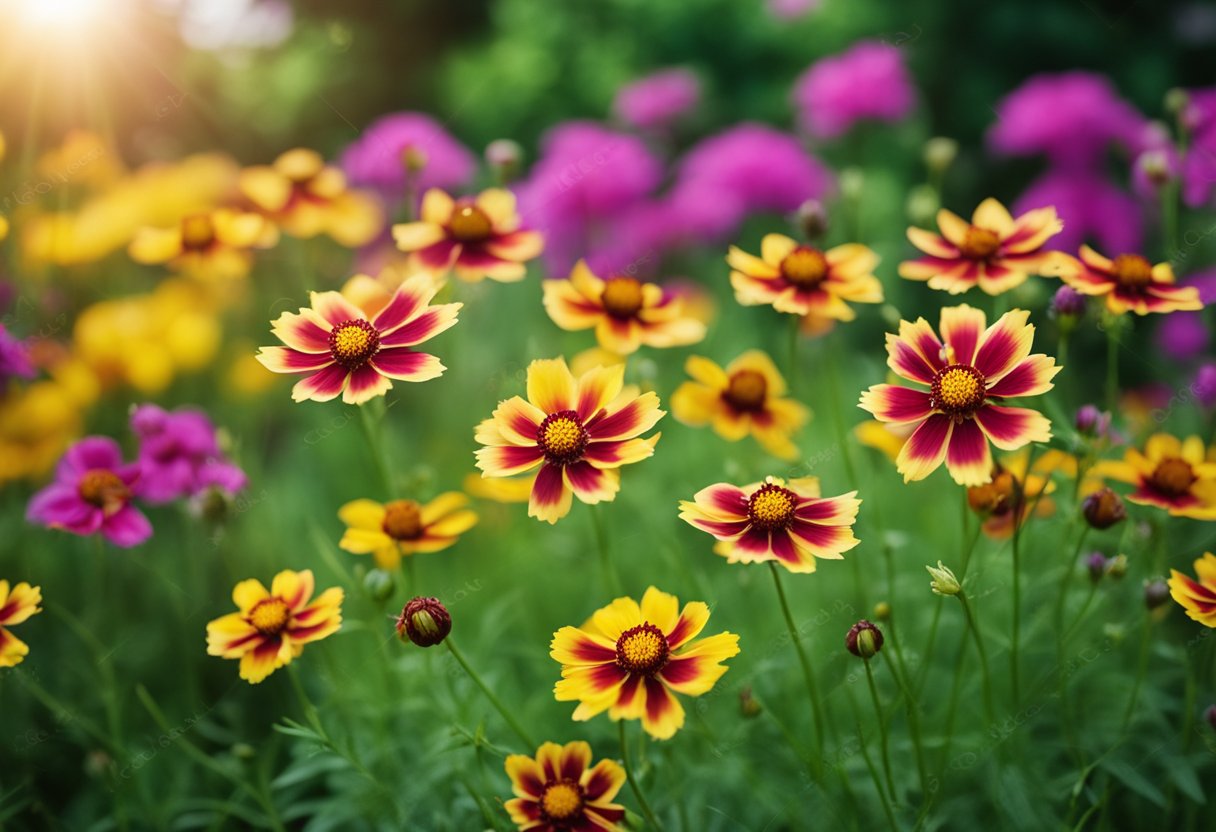
Coreopsis is a genus of flowering plants that belongs to the Asteraceae family. It comprises about 80 different species, including annuals and perennials. Coreopsis is popular among gardeners because of its bright and cheerful daisy-like flowers that bloom in the summer and fall. In this section, we will explore the different varieties and cultivars of Coreopsis.
Popular Types
There are four species of Coreopsis that are of particular interest to gardeners: Coreopsis grandiflora, Coreopsis lanceolata, Coreopsis verticillata, and Coreopsis rosea. These species have given rise to numerous varieties and cultivars that differ in color, height, and structure.
Color Variations
Coreopsis flowers come in a range of colors, including red, yellow, pink, orange, and white. The most common color is yellow, which is found in many varieties and cultivars. Some popular yellow cultivars include Coreopsis verticillata ‘Moonbeam’ and Coreopsis grandiflora ‘Sunray’.
Height and Structure
Coreopsis plants vary in height and structure. Some cultivars, like Coreopsis grandiflora ‘Early Sunrise’, grow to only 12-18 inches tall, while others, like Coreopsis verticillata ‘Zagreb’, can reach up to 3 feet tall. Some cultivars, like Coreopsis grandiflora ‘Presto’, have a compact, mounding habit, while others, like Coreopsis verticillata ‘Golden Gain’, have a more open, spreading habit.
In summary, Coreopsis is a versatile plant that offers a wide range of colors, heights, and structures. Whether you are looking for a low-growing border plant or a tall, showy specimen, there is a Coreopsis cultivar that will suit your needs.
Gardening Benefits
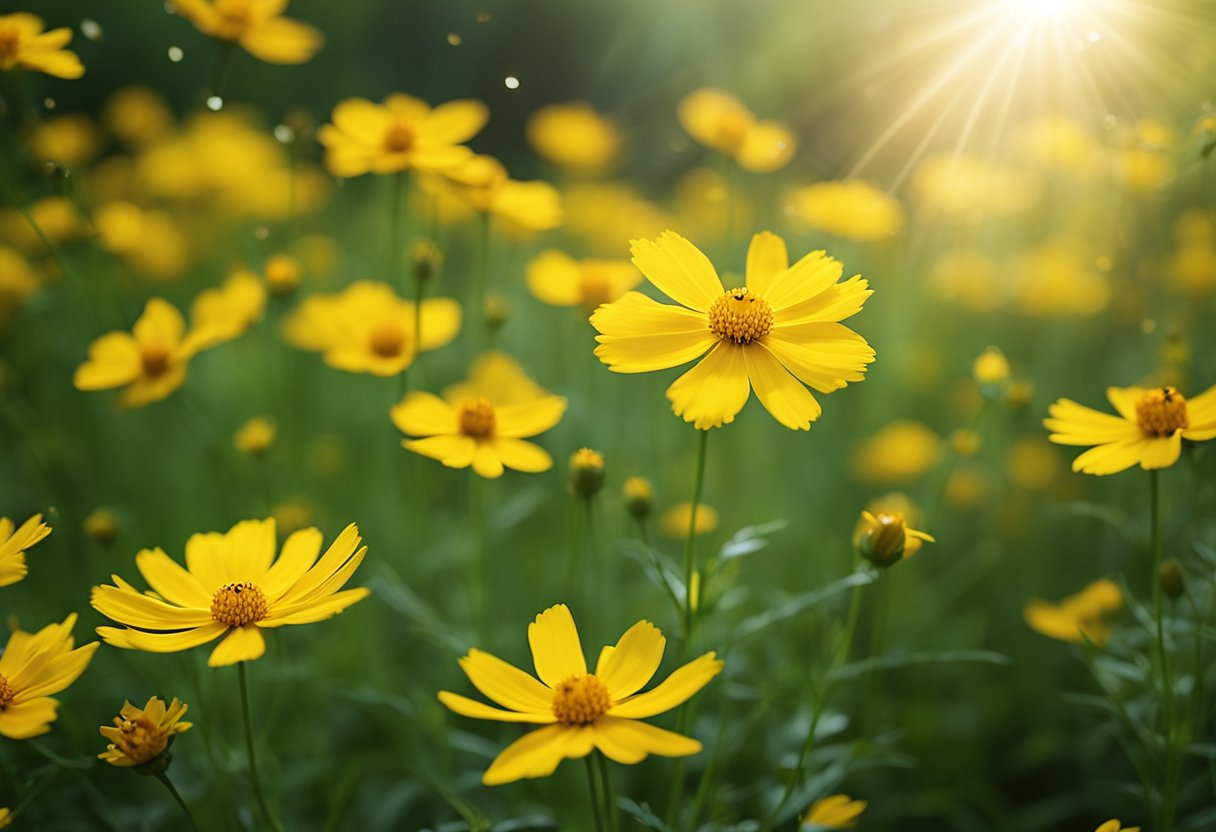
Coreopsis is a versatile and low-maintenance plant that can bring many benefits to any garden. Here are some of the gardening benefits of Coreopsis:
Attracting Wildlife
Coreopsis is a great plant for attracting wildlife to your garden. The bright and colorful flowers of Coreopsis are a favorite of butterflies, bees, and other pollinators. These insects are essential for the pollination of other plants in your garden, making Coreopsis an important addition to any garden.
In addition to attracting butterflies and bees, Coreopsis can also attract birds to your garden. The seeds of Coreopsis are a favorite of many bird species, making it a great choice for gardeners who want to attract birds to their garden.
Landscape Uses
Coreopsis is a versatile plant that can be used in a variety of landscape settings. It is a great choice for garden beds and borders, where its bright and colorful flowers can add a pop of color to your garden. Coreopsis is also a great choice for containers, where it can be used to add height and interest to your patio or balcony.
In addition to its use in the garden, Coreopsis is also a great choice for cut flowers. The long stems and bright flowers of Coreopsis make it a popular choice for floral arrangements.
Overall, Coreopsis is a great choice for gardeners who want to add color and interest to their garden while also attracting wildlife. Whether you are looking for a low-maintenance plant for your garden beds or a colorful addition to your patio containers, Coreopsis is a versatile and beautiful plant that is sure to please.
Maintenance and Care
Coreopsis plants are low-maintenance and easy to care for. With proper care, they can bloom for weeks on end. Below are some tips on how to maintain and care for your coreopsis plants.
Deadheading and Pruning
Deadheading is the process of removing spent flowers from the plant. This encourages the plant to produce more flowers and prevents the plant from wasting energy on producing seeds. Deadheading can be done by pinching off the spent flowers or cutting them off with scissors or pruning shears.
Pruning is the process of cutting back the plant to control its shape and size. Pruning can also help rejuvenate an old or overgrown plant. It is best to prune coreopsis plants in the early spring before new growth begins. Cut back the plant to about half its height, making the cut just above a leaf node.
Division and Propagation
Coreopsis plants can be divided every 2-3 years to keep them healthy and vigorous. Division is the process of separating the plant into smaller sections and replanting them. To divide a coreopsis plant, dig up the entire plant and gently separate the roots into smaller sections. Replant each section in a new location.
Propagation is the process of growing new plants from existing ones. Coreopsis plants can be propagated from seeds or cuttings. To propagate from seeds, sow the seeds in the spring or fall in a well-draining soil. To propagate from cuttings, take a 3-4 inch cutting from a healthy plant and plant it in a well-draining soil.
Pest and Disease Management
Coreopsis plants are generally pest and disease resistant, but they can be susceptible to powdery mildew, slugs, and deer. Powdery mildew is a fungal disease that appears as a white powdery coating on the leaves. To prevent powdery mildew, make sure the plant has good air circulation and avoid overhead watering.
Slugs can be controlled by handpicking them off the plant or using slug bait. Deer can be deterred by using deer-resistant plants or using a deer repellent spray.
In summary, coreopsis plants are low-maintenance and easy to care for. Deadheading and pruning can help promote blooming, while division and propagation can help keep the plant healthy and vigorous. Pest and disease management is generally not a major concern, but powdery mildew, slugs, and deer can be controlled with proper care.
Seasonal Considerations
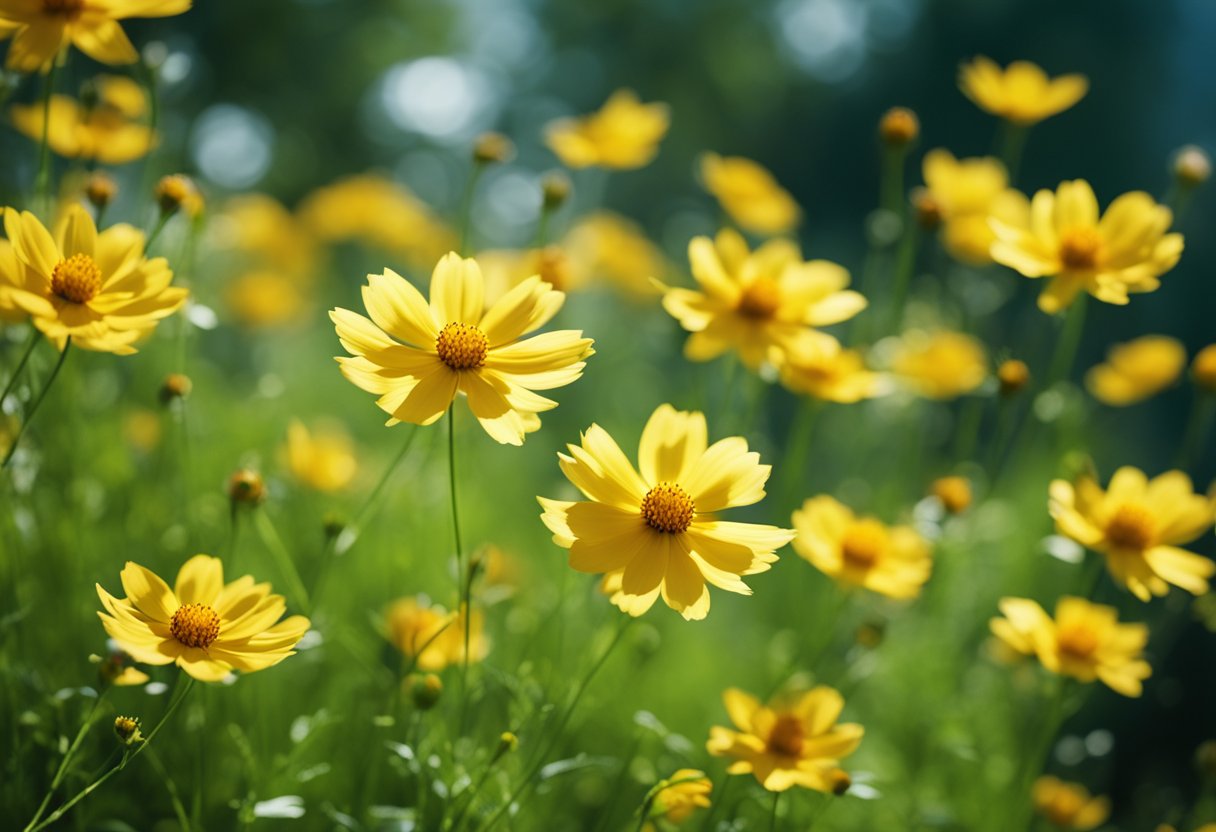
Spring and Summer Care
Coreopsis is a low-maintenance flowering plant that produces bright yellow, pink, or red blooms in the spring and summer. To ensure a healthy and vibrant display of flowers, it is important to provide the plant with adequate sunlight, water, and nutrients. Coreopsis plants thrive in full sun and well-draining soil, so make sure to plant them in a location that receives at least six hours of direct sunlight per day.
During the growing season, it is important to keep the soil evenly moist but not waterlogged. Overwatering can cause root rot and other issues, so it is important to monitor the soil moisture level regularly. Fertilizing the plant with a balanced fertilizer every four to six weeks can also help promote healthy growth and blooming.
Fall and Winter Care
As fall approaches, coreopsis plants will begin to enter dormancy. During this time, it is important to cut back the foliage to about two inches above the soil line. This will help the plant conserve energy and prepare for the winter months.
In areas with harsh winters, it is important to protect the plant from freezing temperatures and excessive moisture. Adding a layer of mulch around the base of the plant can help insulate the roots and protect them from freezing. If the plant is in a container, it may be necessary to move it to a protected location such as a garage or basement.
Seed Age
Coreopsis seeds can be saved for future planting, but it is important to keep in mind that the viability of the seeds decreases over time. To ensure the best chance of germination, it is recommended to use seeds that are less than two years old. When storing seeds, make sure to keep them in a cool, dry location to prevent mold and rot.
Overall, coreopsis is a hardy and easy-to-grow plant that can add a splash of color to any garden or landscape. By providing the plant with the right care and attention throughout the growing season, gardeners can enjoy beautiful blooms year after year.
Environmental Adaptations
Coreopsis is a genus of flowering plants that has strong environmental adaptability and encroachment ability. It is widely distributed in Eastern China, ranging from urban areas to natural environments. In North America, Coreopsis is found in most of the United States and parts of Canada. It is also found in South America.
Drought Tolerance
Coreopsis is a drought-tolerant plant that can survive in hot and dry climates. It has a deep root system that allows it to access water from deep in the soil. This makes it an ideal plant for areas with low rainfall or limited water resources.
Climate Zones
Coreopsis is hardy in USDA Hardiness Zones 4 to 9. It can tolerate a wide range of temperatures, from cold winters to hot summers. It prefers full sun to partial shade and well-drained soil. It is not tolerant of wet soil or standing water.
In summary, Coreopsis is a hardy and adaptable plant that can thrive in a variety of environments. Its drought tolerance and ability to grow in a range of climates make it a popular choice for gardens and landscapes.
Additional Tips
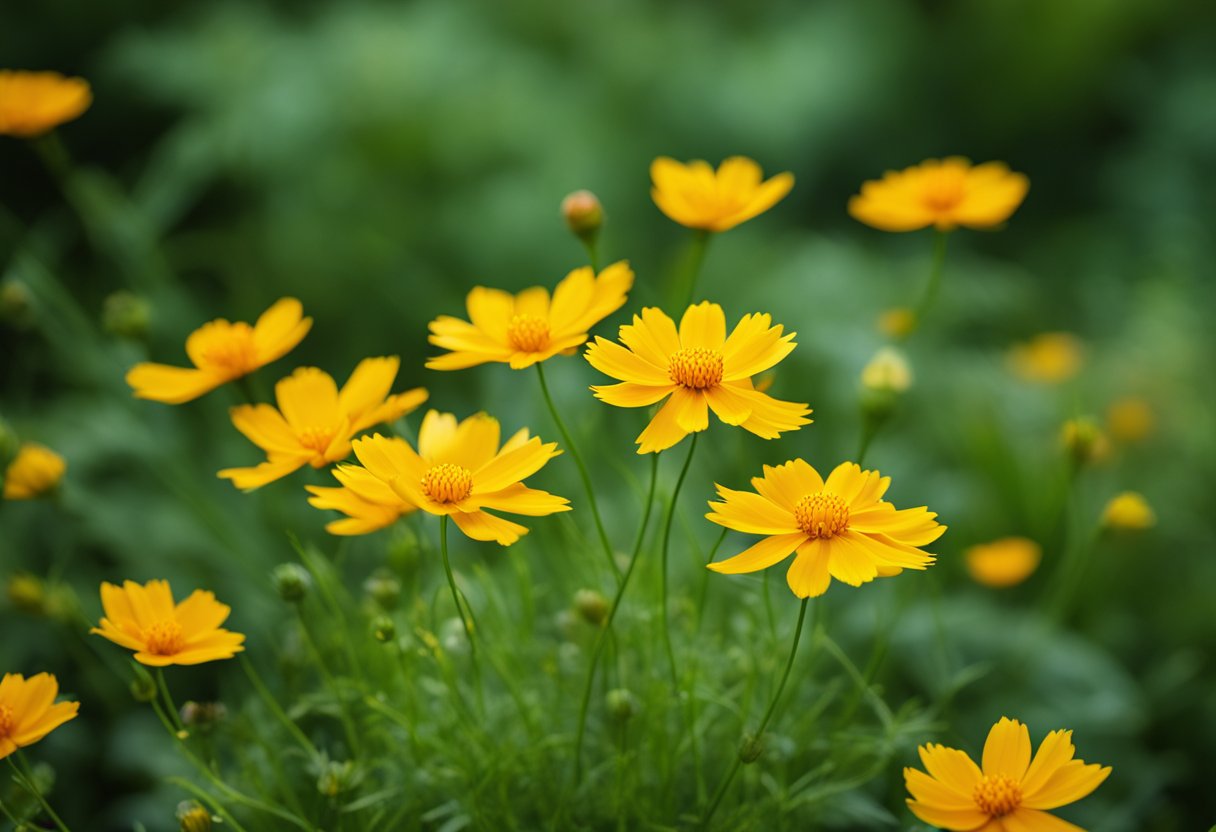
Companion Planting
Coreopsis can be paired with other low-maintenance plants to create a beautiful and easy-to-care-for garden. Some good companion plants for coreopsis include black-eyed Susan, coneflower, and yarrow. These plants have similar growing requirements and will thrive in the same conditions as coreopsis. Additionally, planting coreopsis with other flowering plants can attract pollinators to your garden, which can help your plants thrive.
Soil Amendments
To ensure your coreopsis plants grow healthy and strong, it is important to provide them with well-draining soil. Sandy soil or soil amended with perlite can be ideal for coreopsis. These soil types allow for good drainage, which can help prevent root rot and other issues. Additionally, coreopsis plants can benefit from the addition of compost to the soil. Compost can provide important nutrients to the plants, which can help them grow and bloom more prolifically.
Overall, coreopsis is a low-maintenance plant that can add beautiful color and texture to any garden. By following these additional tips, you can ensure your coreopsis plants thrive and provide you with years of enjoyment.
Frequently Asked Questions
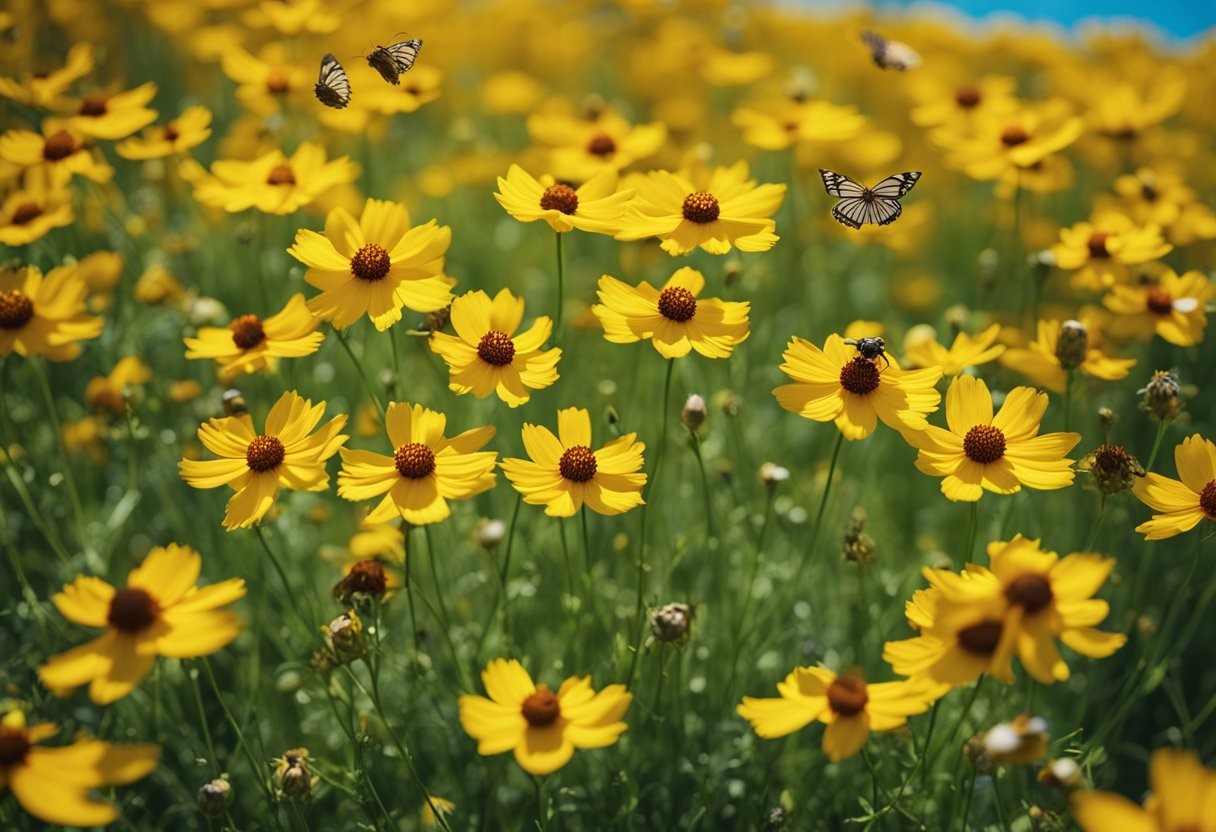
How tall can Coreopsis typically grow?
Coreopsis plants can grow from 6 inches to 4 feet tall, depending on the species and variety. Dwarf varieties are usually around 6-12 inches tall, while taller varieties can reach up to 4 feet.
Are Coreopsis plants perennial, returning year after year?
Yes, Coreopsis plants are usually perennial, meaning they will return year after year. However, some varieties are annuals or biennials, and will only last for one or two years respectively.
What color variations can be found in Coreopsis flowers?
Coreopsis flowers come in a wide range of colors, including yellow, pink, red, orange, and white. Some varieties also have bi-colored or multi-colored flowers.
What are the ideal sunlight conditions for growing Coreopsis?
Coreopsis plants prefer full sun, meaning they should receive at least 6 hours of direct sunlight per day. They can tolerate some shade, but too much shade can result in weaker growth and fewer flowers.
Can Coreopsis plants spread and how can they be managed?
Yes, Coreopsis plants can spread and form clumps over time. This can be managed by dividing the clumps every 2-3 years in the spring or fall. This will also help to rejuvenate the plants and promote healthier growth.
What is the preferred habitat for planting Coreopsis to ensure optimal growth?
Coreopsis plants prefer well-draining soil that is rich in organic matter. They can tolerate a range of soil types, but prefer slightly acidic to neutral soil with a pH between 6.0 and 7.0. They also prefer moderate moisture levels, so be sure to water regularly but avoid overwatering.

